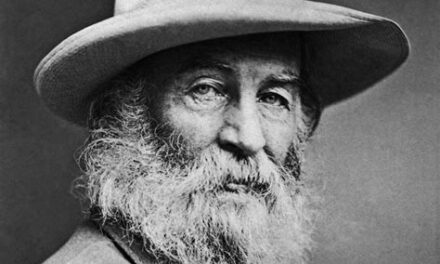The first commercial television network, the DuMont Television Network, began to broadcast in 1946, but programming was limited to viewers between New York and Washington, DC. Over the next two years, NBC, ABC, and CBS began regional broadcasting. It wasn’t until 1951 that national broadcasting emerged with all four networks using AT&T’s microwave radio relay lines. Dumont, which first broadcast the Rev. Fulton Sheen and launched Jackie Gleeson, went out of business in 1956, leaving the American public adjusting their “rabbit ears” to view the programming of the “big three” networks.
The movies, as a visual medium, were already integral to the daily life of American culture and consciousness; film having already passed through two “golden ages,” one the silent era and another in sound. The presence of televisions in the home grew quickly, from 6,000 in 1946 to 12 million in 1951. By 1955 television had entered one-half of all American homes. The three networks dominated TV screens; color was added in 1964; cable TV arrived in the 70s.
Viewers were given more power over their own viewing with the arrival of the VCR in the 60s, a format not widely adopted until the mid-70s. The DVD went on sale in 1997, but its rentals did not surpass the VCR until 2003. The first Blu-ray titles appeared in June, 2006 and grew steadily until Internet “streaming,” which had begun with a performance by “Severe Tire Damage” on the Internet June 25, 1993.
By 2011, more Americans were streaming visual content than DVD and Blu-ray combined: 3.4 billion via online streaming, up from 1.4 billion in 2010, while disc based watching decreased from 2.6 billion in 2010 to 2.4 billion in 2011. One large factor: consumers paid 51 cents for movies consumed online, compared to $4.72 for disc based titles.
Through these media, viewing movies, TV shows, and the attendant commercials became a significant presence in our lives. But then came a complete game changer: The backbone of the World Wide Web or the “Internet” was years in development, but its popular use didn’t begin until the 80s, rising to prominence in the mid-90s. In 2005, 16% of the world was using the Internet; this increased to 39% by 2013. In the developed world, the range was from 51% in 2005 to 77% in 2013.
The “new media” made possible by the Internet and the availability of the PC and the PDA (any kind of personal data assistant — phone or tablet) has captured and joined together the reading world, including books, newspaper, and magazines, and the visual world of film (TV, DVD, Blu-ray) and made them available to people worldwide, anywhere they happen to be, at home or elsewhere.
This massive switch of reading from print to the digital medium has made it possible to use visual means for many kinds of communication — such as in journalism, education, advocacy, and politics — that were once largely confined to print.
My generation, the heart of the post WWII “baby boom,” learned its visual literacy through experience, not by formal training. We were taught to read, interpret texts, and to use language effectively, both written and spoken (remember when public schools taught cursive writing.) These skills, combined with a knowledge of history, literature, math, and science, were considered to create a literate citizenry, a citizenry capable, among other things, of participating in a democratic society.
Visual literacy can be understood by analogy to literacy in the language arts. We learn not only how to read a text — its use of narrative voice, metaphor, simile, symbol, imagery, plot, character, action, spectacle — but we learn how to write, how to create a text. Reading and writing enrich each other, making that form of literacy more penetrating and sophisticated. When it comes to visual literacy, there is very little formal education offered in the public schools and even less in the form of continuing education for adults.
Given the dominance of visual communication in this generation, it’s ridiculous that our school curricula don’t include requirements in learning the basics of “reading” images as well as the basics of creating those images.
In a world where our minds and hearts are, on a daily basis, being shaped and informed by images, whether stills or moving, becoming visually literate is a goal we should all pursue and should certainly provide for our children. This will mean that we learn not only to understand the “grammar” of image representation but also the skills to create those representations. In other words, we all need to learn how to make a film. More on this later!















The importance of how, in our time, to “learn not only to understand the “grammar” of image representation but also the skills to create those representations” in order to think critically, and communicate our thoughts in this global environment cannot be overestimated. It is a subject that has increasingly—for decades now—been on the minds of those of us using this visual and verbal medium called the Internet. Mr. Hudson has admirably outlined the challenge ahead, especially as we prepare to relay the torch to the next generations of Christians who have grown up in this multimedia environment and will spend their whole lives in the 21st century. We have to play the cards we’ve been dealt, even when we didn’t ask for them and even if some of us don’t particularly like it. Hudson in effect says the task is to get real—and get smart.